
North Maluku is a province of Indonesia. It covers the northern part of the Maluku Islands, bordering the Pacific Ocean to the north, the Halmahera Sea to the east, the Molucca Sea to the west, and the Seram Sea to the south. It shares maritime borders with North Sulawesi, Southeast Sulawesi and Central Sulawesi to the west, Maluku to the south, Southwest Papua to the west, and Palau and the Philippines to the north. The provincial capital is Sofifi on the largest island of Halmahera, while the largest city is the island city of Ternate. The population of North Maluku was 1,038,087 in the 2010 census, making it one of the least-populous provinces in Indonesia, but by the 2020 Census the population had risen to 1,282,937, and the official estimate as at mid 2023 was 1,328,594.
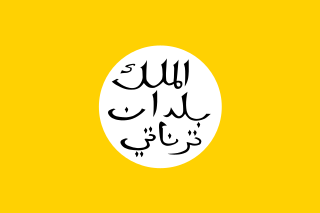
The Sultanate of Ternate, previously also known as the Kingdom of Gapi is one of the oldest Muslim kingdoms in Indonesia besides the sultanates of Tidore, Jailolo, and Bacan.

The Sultanate of Tidore was a sultanate in Southeast Asia, centered on Tidore in the Maluku Islands. It was also known as Duko, its ruler carrying the title Kië ma-kolano. Tidore was a rival of the Sultanate of Ternate for control of the spice trade and had an important historical role as binding the archipelagic civilizations of Indonesia to the Papuan world. According to extant historical records, in particular the genealogies of the kings of Ternate and Tidore, the inaugural Tidorese king was Sahjati or Muhammad Naqil whose enthronement is dated 1081 in local tradition. However, the accuracy of the tradition that Tidore emerged as a polity as early as the 11th century is considered debatable. Islam was only made the official state religion in the late 15th century through the ninth King of Tidore, Sultan Jamaluddin. He was influenced by the preachings of Syekh Mansur, originally from Arabia. In the 16th and 17th centuries, the Sultans tended to ally with either Spain or Portugal to maintain their political role but were finally drawn into the Dutch sphere of power in 1663. Despite a period of anti-colonial rebellion in 1780–1810, the Dutch grip on the sultanate increased until decolonization in the 1940s. Meanwhile, Tidore's suzerainty over Raja Ampat and western Papua was acknowledged by the colonial state. In modern times, the sultanate has been revived as a cultural institution.

The Sultanate of Bacan was a state in Maluku Islands, present-day Indonesia that arose with the expansion of the spice trade in late medieval times. It mainly consisted of the Bacan Islands but had periodical influence in Ceram and the Papuan Islands. It fell under the colonial influence of Portugal in the 16th century and the Dutch East India Company (VOC) after 1609. Bacan was one of the four kingdoms of Maluku together with Ternate, Tidore and Jailolo, but tended to be overshadowed by Ternate. After the independence of Indonesia in 1949, the governing functions of the sultan were gradually replaced by a modern administrative structure. However, the sultanate has been revived as a cultural entity in present times.
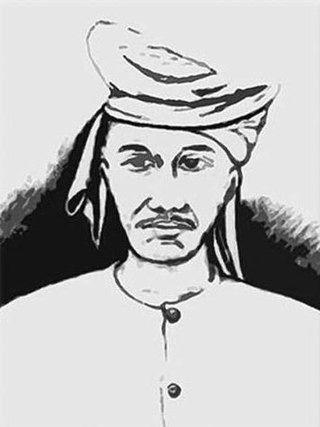
The Nuku Rebellion was an anti-colonial movement that engulfed large parts of Maluku Islands and Western New Guinea between 1780 and 1810. It was initiated by the prince and later sultan of Tidore, Nuku Muhammad Amiruddin, also known as Prince Nuku or Sultan Nuku. The movement united several ethnic groups of eastern Indonesia in the struggle against the Dutch and was temporarily successful, helped by an alliance with the British East India Company. After the demise of Nuku it was however defeated, and Maluku was restored under European rule. In modern time, Nuku was officially appointed a National Hero of Indonesia.

Sultan Babullah, also known as Sultan Baabullah was the 7th Sultan and 24th ruler of the Sultanate of Ternate in Maluku who ruled between 1570 and 1583. He is known as the greatest Sultan in Ternatan and Moluccan history, who defeated the Portuguese occupants in Ternate and led the Sultanate to a golden peak at the end of the 16th century. Sultan Babullah was commonly known as the Ruler of 72 (Inhabited) Islands in eastern Indonesia, including most of the Maluku Islands, Sangihe and parts of Sulawesi, with influences as far as Solor, East Sumbawa, Mindanao, and the Papuan Islands. His reign inaugurated a period of free trade in the spices and forest products that gave Maluku a significant role in Asian commerce.
Sultan Hairun Jamilu was the 6th Muslim ruler of Ternate in Maluku, reigning from 1535 to 1570. During his long reign, he had a shifting relation to the Portuguese who had a stronghold in Ternate and tried to dominate the spice trade in the region. This ended with his assassination at the hands of a Portuguese soldier in 1570.
Bayan Sirrullah was the second Sultan of Ternate in Maluku. He is also known as Abu Lais or Kaicili Leliatu. He ruled from perhaps 1500 to 1521 and is important as the first east Indonesian ruler who made contact with the encroaching Portuguese.
Dayal also known as Hidayatullah was the fourth Sultan of Ternate in Maluku. He had a short and largely nominal reign between 1529 and 1533 before fleeing Ternate due to Portuguese pressure. He later tried to create an anti-Portuguese alliance among the kings in North Maluku, but was mortally wounded in battle against the Europeans.
Marhum, was, according to late tradition, the eighteenth King or Kolano of Ternate in the Maluku Islands. He supposedly ruled between 1465 and 1486, being the first king to adopt Islam. His name merely means "The Late", "The Deceased", and he is probably the same person as King Gapi Baguna II, mentioned in several other chronicles and king lists. His son, Zainal Abidin, became the first Sultan of Ternate.
Ciri Leliatu (Ciriliyati) (Jawi: چلياتي); or Sultan Jamaluddin (سلطان جمال الدين; fl. late 15th/early 16th century) was the first Sultan of Tidore in Maluku Islands, who reigned at a time when Islam made advances in this part of Indonesia because of contacts brought about by the increased trade in spices. He is also sometimes credited with the first Tidorese contacts with the Papuan Islands.
Sultan Al-Mansur was the second Sultan of Tidore in Maluku islands, who reigned from at least 1512 until 1526. Certain legends associate him with the beginnings of Tidore's rule over the Papuan Islands and western New Guinea. During his reign the first visits by Portuguese and Spanish seafarers took place, which led to grave political and economic consequences for the societies of eastern Indonesia. Trying to preserve his realm in the face of Western encroachment, he finally fell victim to Portuguese enmity.

Nuku was the nineteenth Sultan of Tidore in Maluku Islands, reigning from 1797 to 1805. He is also known under the names Sultan Muhammad al-Mabus Amiruddin Syah, Saifuddin, Jou Barakati, and Kaicili Paparangan. He led a resistance against Dutch colonialism in Maluku and Papua from 1780 which was eventually successful. Being a leader with great charisma, he gathered discontents from several ethnic groups and strove to restore Maluku to its pre-colonial division into four autonomous kingdoms. Nuku used global political conflict lines by allying with the British against the French-affiliated Dutch and helped them conquer the Dutch stronghold in Ternate in 1801. In modern Indonesia he is commemorated as a pahlawan nasional.
Sultan Zainal Abidin was the twentieth Sultan of Tidore in Maluku Islands. He inherited the anti-Dutch movement that had been built up by his brother Nuku, succeeding him as ruler in 1805. However, he was not capable of resisting renewed attacks by the Dutch colonial power and was forced to flee from Tidore Island in 1806. In the following years he tried using allied populations in Halmahera and Papua to fight the Dutch, with limited success, until his demise in 1810. He was the last independent Sultan of Tidore, since his successors were firmly under British or Dutch control.
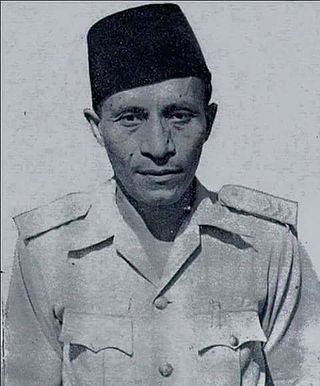
Sultan Zainal Abidin Alting Syah was the 26th Sultan of Tidore in Maluku Islands, reigning from 1947 to 1967. He was also the appointed Governor of Irian Barat in 1956–1962 before the actual inclusion of Irian Barat in Indonesia, serving official Indonesian claims against Dutch colonial rule.
Cico according to historical tradition, was the first king (Kolano) of Ternate in Maluku Islands, Indonesia. His regnal years are given as 1257-1277. Being originally chief of Sampalu village by the coast, he was acknowledged as ruler by the other village leaders in Ternate, starting a dynasty that is still in existence. There are however, several versions of the foundation story, some of which say that Mashur-ma-lamo, son of the Arab immigrant Jafar Sadik, was the first king.
The pre-Islamic rulers of Ternate lorded over the leading spice-producing kingdom in the Maluku Islands in present-day Indonesia. They are known from several partly different historical traditions. One version commences with Cico, a chief of the coastal village Sampalu who obtained a mystical golden mortar and pestle and was elected king (Kolano) by the chiefs of the islands. Other versions start with Mashur-ma-lamo, son of the Arab immigrant Jafar Sadik and a heavenly nymph. Ternate was part of a ritual quadripartition together with the kingdoms of Tidore, Jailolo and Bacan. After many generations, King Tidore Wonge converted to Islam and became Sultan under the name Zainal Abidin (1486?-1500?).
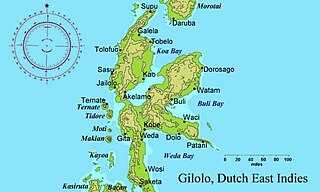
The Sultanate of Jailolo was a premodern state in Maluku, modern Indonesia that emerged with the increasing trade in cloves in the Middle Ages. Also spelt Gilolo, it was one of the four kingdoms of Maluku together with Ternate, Tidore, and Bacan, having its center at a bay on the west side of Halmahera. Jailolo existed as an independent kingdom until 1551 and had separate rulers for periods after that date. A revivalist Raja Jailolo movement made for much social and political unrest in Maluku in the 19th century. In modern times the sultanate has been revived as a symbolic entity.
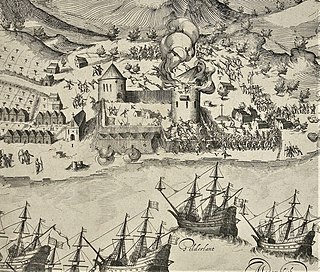
The Ternatean–Portuguese conflicts were a series of conflicts in the Spice Islands in eastern Indonesia between the Portuguese and their allies on one hand, and the Sultanate of Ternate and its allies, on the other. Hostilities broke out from time to time after the establishment of Portugal in Moluccas in 1522. The strongly Catholic and Muslim identities of the combatants gave the struggle elements of a war of religion, although this aspect was frequently blurred by cross-faith alliances. It was also an economic war since the Portuguese aim was to control export of the profitable trade in cloves. Portuguese-Ternatan rivalry later merged with attempts of expansion by the Spanish in the Philippines. The Portuguese were eventually defeated in 1605 by an alliance between the Dutch East India Company (VOC) and Ternate, ending their active involvement in Moluccas affairs. However, they were soon replaced by the Spanish who maintained an Iberian presence in the region up to 1663.










